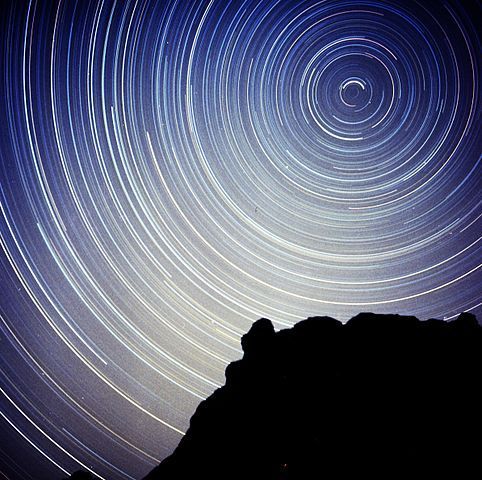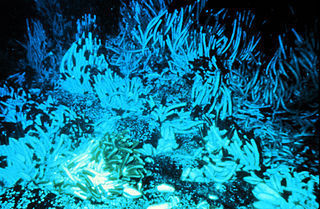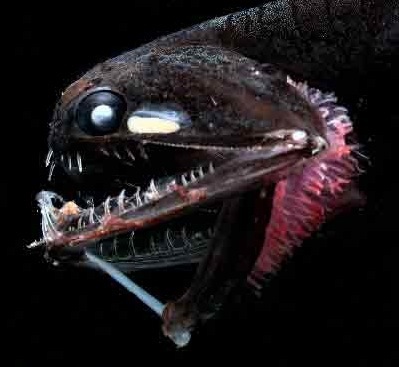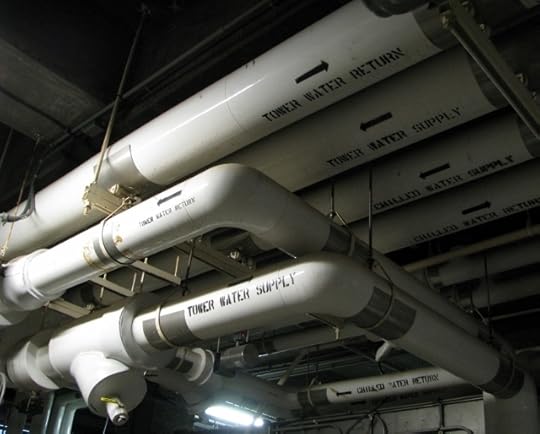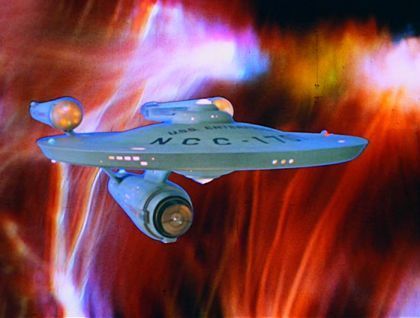Kate Rauner's Blog, page 105
September 29, 2013
Building a Science Fiction Library? Here’s a ‘Wow’ List
The University of Kansas takes science fiction seriously. Take a look at their list (100 titles strong) for a basic science fiction library. http://www.sfcenter.ku.edu/sflib.htm The site has news, courses, and other resources.








September 25, 2013
North Star – a Poem
North Star
By Kate Rauner
The universe circles
And centers the sky
On the small bear’s last star
To my northern eye.
But eons ago,
When writing was new,
The pyramid-builders
Looked at the sky too.
Their universe circled stars
Different from mine,
In the dragon’s faint tail,
Fifth star in the line.
A worthier light
Will pivot the sky
For eyes in the night.
What manner of man?
Would woman we know?
When the universe circles
Round Vega’s bright glow.








September 19, 2013
Bear – a Haiku
September 11, 2013
Life on Europa – a Poem
Endlessly squashed by Jupiter’s mass
Tides in rocks that flow like glass,
Heat from the core bursts up through the floor
And mineral teas brew deep in the seas.
Sulfur and phosphates are only in traces
But rich with precursor acids and bases,
Organic foams that slither and roam
While transparent tubes trap colloidal foods.
Extremes of heat and pressure so benthic
What’s possible must be chemosynthetic,
Free swimming ribbons sport bio-glow fins
Small shelly things ooze membranes like wings.
Europa hosts life deep under her ice -
Perhaps.
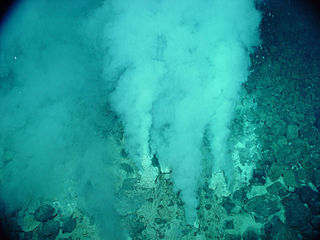
Images are from Earth’s deep ocean life – Wikipedia Commons
September 9, 2013
Biosphere 2 – Martian Colony Demonstration Turns to Modern Research
Sending humans to Mars may be a dream whose time has come. US presidents have talked about it, but private groups seem to dominate the news: http://www.mars-one.com/en/ , http://www.inspirationmars.org/ , http://www.exploremars.org/ among them. Today you can apply to become a colonist on Mars or donate to the effort, but twenty years ago, a private group performed an experiment aimed at space colonization. While the facility has morphed into a more traditional research facility, you can still visit it (for a $20 fee) today.
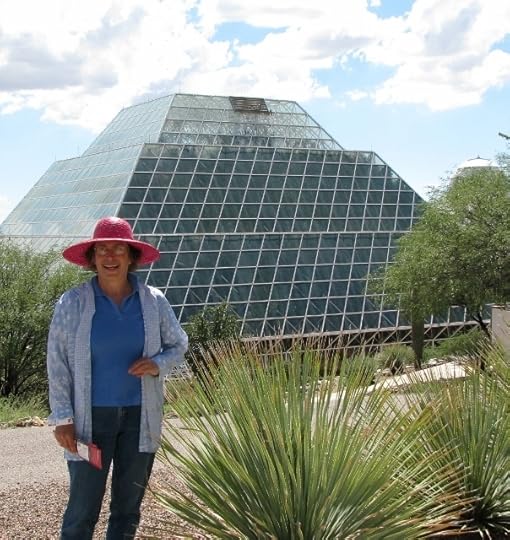 Biosphere 2 (http://www.b2science.org/), outside Tucson, Arizona, turns 20 years old this month. I recently visited the site as a tourist. There is an excellent article about B2 in Desert Exposure. http://bit.ly/1dNH2oL I was struck by how similar the pictures in the article are to my pictures. Obviously we took the same tour.
Biosphere 2 (http://www.b2science.org/), outside Tucson, Arizona, turns 20 years old this month. I recently visited the site as a tourist. There is an excellent article about B2 in Desert Exposure. http://bit.ly/1dNH2oL I was struck by how similar the pictures in the article are to my pictures. Obviously we took the same tour.
B2 originated as an attempt to demonstrate how colonists on Mars or the moon might live and that experiment still dominates the tour. The experiment cost tens of millions of dollars and was funded by a wealthy individual (reminds me of SpaceX today). Several communities of plants and animals were transplanted to the huge greenhouse and eight people agreed to live inside for two years. The biosphere was sealed from the outside world, even using a steel liner to isolate it from the ground. Engineering problems were solved, like how to allow the air inside to expand and contract with temperature so the glass greenhouse panels wouldn’t break. The people inside recycled all their air, water, and wastes; grew all their own food; and created a little community.
B2 did not try to construct their structure as a colony on Mars possibly could, or explain how the water, soil, and other contents might arrive on Mars. While matter would not enter or leave, lots of energy had to be provided. Their “self-sustaining world” was sustained by electricity from the outside, and all the pumps, fans, and compressors that electricity ran. Even in sunny Arizona, their farming suffered from low light levels. It makes me think that solar cells on dusty Mars may never provide enough power. Real Mars colonies would surely like to have the (almost mythical) fusion reactors of the future.
The eight person crew toughed it out for the two-year demonstration, surviving better than the animals they brought in with them: Except for insects. Insects did amazingly well, to the crew’s frequent dismay.
There were interesting developments. Oxygen was unexpectedly depleted by the fresh concrete from construction. Concrete doesn’t harden just by drying out. It undergoes complex chemical reactions. As it cured, the concrete tied up oxygen, so in one breach of the “sealed” protocol, oxygen was pumped in so the crew wouldn’t suffocate. In an ironic reflection of current global warming worries, CO2 built up, turning the water acidic.
High CO2 levels are not good for people. At 1% CO2, which you might experience in a poorly ventilated, crowded auditorium, some occupants will feel drowsy. Above 5%, CO2 is toxic (according to InspectAPedia).
Happily, the eight person crew emerged after two years alive. They had lost a great deal of weight due to their limited success at farming and generally were glad to get away from each other. Relationships outside B2 fared no better, and the wealthy supporter soon evicted the original visionaries. Living sealed inside a few acres of habitat with a small group of people may still be the biggest problem for extraterrestrial colonists to solve.
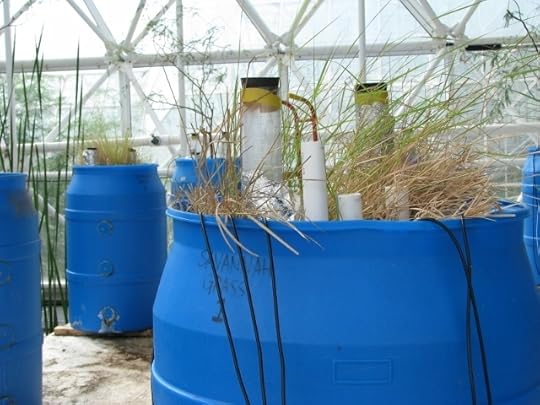
 The tour guides still talk mostly about the old experiment, but current research is also on display. Today the University of Arizona, supported by the same, original wealthy individual, uses B2 as an experimental greenhouse. They run experiments that can be done nowhere else (like growing mature cottonwood trees under different levels of CO2) and some that probably could fit in a lab (exposing freshly pulverized rock to various organisms or testing soil sensors).
The tour guides still talk mostly about the old experiment, but current research is also on display. Today the University of Arizona, supported by the same, original wealthy individual, uses B2 as an experimental greenhouse. They run experiments that can be done nowhere else (like growing mature cottonwood trees under different levels of CO2) and some that probably could fit in a lab (exposing freshly pulverized rock to various organisms or testing soil sensors).
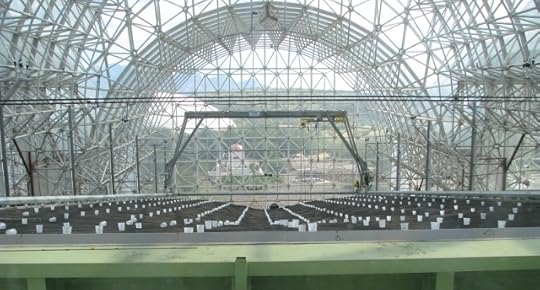
Setting up LEO
The university is currently setting up a large-scale experiment: the Landscape Evolution Observatory (LEO), designed to study how water, energy, carbon, microbes, and vegetation move through and modify a landscape. For science like this, labs are well-controlled but too small, and the world is big enough but uncontrollable. B2 offers programmable rain, humidity, and temperatures where researchers can perform a study like nowhere else.
I am humbled to realize how much we still do not know about the world we live in, and encouraged to learn that we still try to find out. I’m not yet sure what I think about colonizing Mars, and I haven’t applied to go, but space is “the final frontier”.








September 6, 2013
Library Month
September is Library Card Month in the US! (We have a month for everything. “Things” have to share months, since there are not nearly enough in a year.)
Before 1900 in the US, most libraries were available only to subscribers. Over time, public libraries grew in number. By 1930, half the American public libraries had been built by a wealthy philanthropist, Andrew Carnegie. Today, only the smallest towns in the US do not have a public library.
I’ve always been a library fan, and electronic collections just make libraries better. I hope that you, like me, will visit your library in September.








September 2, 2013
Read Chapter 3 of Science Fiction Book Glitch
Here is an excerpt from my science fiction ebook, Glitch. You can read starting at Chapter 1 here.
Glitch is available now for $2.98 at Amazon , Barnes & Noble , Apple, Inktera, Versent, Kobo, Diesel, and on Smashwords. Coming soon to Flipkart, too!
Chapter 3 Helios
Trisha sat forward in her chair, concentrating; elbows on the desk with her jaw resting in the splayed-out fingers of one hand. “I’ve been sending a series of pings in all directions, and I’m getting pings back,” she said.
“I’ve got one ping counterclockwise of MEG1, relative to Mars’s orbit. That’ll be an asteroid preceding MEG1 in Mars’s orbit, but still in the L4 node. Wait. Two. I’ve got two pings; two small asteroids.” She paused, staring intently at the screen.
Everyone sat quietly, barely breathing, waiting for more data.
“And here’s a third ping, clockwise from MEG1 now. An asteroid trailing our position.” Another pause.
“MEG1 should have received a ping back from the blob in front of the sun by now. Even if it’s too far for topography. We have all the large Trojans plotted, and our…” Lee waved towards the wall screen. “Our blob is none of them. It’s got to be small, so it’s got to be close.”
“But there’s nothing there,” he said with finality. Trisha was nodding her agreement.
Rob looked over at Lee. He has rolled his shirt sleeves up past his elbows and lifted his mic away from his mouth. He spread his hands out, empty, for emphasis.
“What?” Rob said, pointing to the screen. “We see it. There’s got to be something there.”
“Nope. Nothing. At least, nothing solid.”
“Even a dust cloud would give some kind of echo,” Trisha said, looking over her shoulder at them.
Rob was about to ask the Arizona crew, yet again, if their imagers were operating properly, when something else changed.
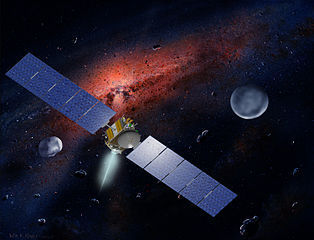
NASA’s spacecraft DAWN
“Our problem is getting worse,” Lee said as he turned back towards the front of the room. “Look at the visible-light image.”
Rob jerked his head up and looked at the left wall screen. Half the sun’s disk was now scooped away. But Lee was right that something was changing. At the left side of the screen, opposite the remains of the sun, a bright point of light had appeared. Rob quickly pulled the image to his work station and replayed the clip from the last few seconds. A tiny point of light appeared and began to grow. He looked back up at the wall screen. The point of light was a little bit brighter. The spectrum display on the right-hand screen was changing too. The intensity had been dropping as the sun was blotted out by whatever was happening. Now the intensity was slowly increasing.
Rob turned his mic on.
“Hey UPMC,’ he said. ‘What does your spectroscopy show?”
“We must be getting internal reflections. Zat must be sunlight. But de intensity ratios are off,” the French lead’s voice responded in Rob’s headset.
‘No, it’s not reflections,’ Rob thought to himself. The tightness in his chest began to shift to a tingling in his stomach. His peripheral vision was blacking out as he stared at the wall screen. Rob took a deep, calming breath and exhaled slowly.
“UPMC! Can you subtract your previous spectrum of the sun from what’s on the screen now?’
“Stand by… Iz here now.” On the screen, a second chart sprung up out of the original.
“Zah sun on the bottom, zah new spectrum on top.”
Rob stared at the new spectrum. Hydrogen, helium, oxygen, carbon. But with more helium and carbon than there should be. He glanced back and forth between the charts, comparing them by eye. The ratios of the trace elements looked different, too.
“This is real,” he said out loud, to no one in particular.
“It’s a reflection of some kind,” one of the post-docs in the back of the room piped up. Rob had forgotten he was there. Levi was staring at the wall screen as he spoke, walking forward along the room’s wall as if to get a better view. “It’s got to be. Or you’ve let MEG1 over-rotate, and that,” he pointed at the screen, “is some other star.”
“MEG1 is moving through the Trojans precisely on the trajectory planned,” Trisha said, shaking her head at the suggestion. “I set MEG1 to send out pings every fifteen minutes. I can plot her course against the asteroids we’ve identified.”
“As for rotating….” Trisha looked down at her work station, tapping through a series of telemetry tables. “The attitude dynamics are spot-on. I see no indication of over-rotation. MEG1 is turning to keep the satellite aimed straight at the sun, exactly as she should on her current trajectory. There is something between her and the sun. There has to be.”
“It makes sense to look for malfunctions, though,” Rob said thoughtfully. Having something useful to do would help him stay calm. “UPMC, see if your data files are superimposed somehow, maybe overwriting in places….” He paused. “Trisha…”
“Already double-checking the attitude dynamics.”
Rob muted his headset. Automatically, all the chatter changed to text. He watched the messages crawl across the bottom of the screen, faster now than he could follow. From time to time he slowed the crawl to catch some words.
“Power systems are all operating within specs,” Lee said, verifying his parameters. “I checked the core craft and the six satellites she carries. Propulsion systems also stable. No sign of any fuel leaks or anything else that might affect attitude or interfere with MEG1′s signal.
“MEG1′s attitude is stable,” Trisha confirmed again with an emphatic nod. “She’s aimed exactly at the sun.”
This was real. MEG1 was pointed straight into the center of the solar system, straight at the sun. Rob’s tingling gut told him she was moving behind something real that was between her and the sun. It wasn’t an asteroid. If you couldn’t believe the pings, you could certainly believe there are no points of light on the night-sides of asteroids.
The point of light continued to grow slowly, expanding to a streak. The intensity in the new spectrum chart was also growing on the screen, just like the size and brightness of the visible-light image was growing. This new light was growing as bright as the sun, a segment of a somewhat orangey disk rather than a pin-point. Rob had no idea how that could be so.
He felt a grin tickling the corners of his mouth. His stomach was tingling more than ever and his hands felt cold. This was a discovery. A bizarre discovery. They had to eliminate every possible malfunction, investigate every possible known object this could conceivably be. That was the only way everyone would know what his stomach was telling him. This was real.
***
Responses to Rob’s earlier message to the mission’s key personnel began to come in. He spent most of the next hour sending ‘we don’t know’ and ‘we tried that’ answers to a slew of questions. The Arizona and French research teams reiterated over and over that all their instruments were functioning properly, as they checked one possible malfunction after another.
Rob watched the crawl of messages. Most of the questions were directed to the university controllers, and before long there were very few questions for him to answer. Arizona and France were checking ever more unlikely suggestions for malfunctions. Terri Yuan, Xplore’s project manager for the MEG mission, was setting up an on-line meeting with Dr. Rivera in Arizona and the UPMC researchers in France. They were still focused on malfunctions, telling everyone not to worry; MEG1 was only halfway to Europa and there was plenty of time to sort these strange images out.
Arizona was also dealing with one of the disadvantages of subscriber financing. Or maybe it was an advantage, even if it was distracting. Everything Rob was seeing was out there on the Internet subscriber site, available in real-time. Reactions were pouring in on the comments page.
The Arizona Group had to quickly ensure their primacy of discovery, even before they were sure what they had discovered. Once malfunctions were eliminated, the next order of business was to post an announcement on the Public Library of Science’s Public Registry. The mission managers would be in the middle of preparing that PLoS posting by now, and Rob didn’t mind letting them handle the task. He’d rather be in mission control.
On the wall screen, the last sliver of the sun had disappeared and the new star had grown to almost a complete disk, its apparent size every bit as large as the sun’s had been. Maybe a little larger. Rob felt his anxiety giving way to excitement. This was real. He was looking at something that no one had ever seen before, that no one had ever even guessed might exist.
But there was no time to ponder the screens. Rob had a job to do and a command-change report to prepare. He must get ready to brief the next shift.
“Hey guys,” he called to Lee and Trisha. “I’m writing the shift report. What are we going to call this thing?”
“We don’t even know what sort of ‘thing’ it is,” Trisha reminded him. “What we’re seeing can’t be so. It must be a glitch in the equipment.”
“Or a glitch in space,” Lee said. “That’s precisely what it is.”
“Perfect!” Rob said, typing on the work station key board. “Whatever it is, it’s a glitch. Now, what about this star thing?”
“Helios,” Lee said, with conviction.
“Helios?” Rob asked.
“Sure. It’s a star, we can all see that. Its spectrum is like the sun’s spectrum. Our sun is ‘Sol’, from the ancient Romans. So this is ‘Helios’ which is the ancient Greek version of ‘Sol’.”
“How do you know about ancient Greeks?” Trisha asked.
“Chris and I went on a vacation with his archeological society once. We got to work on a dig at an ancient Greek site. There were lectures every night. I learned a lot about ancient Greece.”
“You take the best vacations,” Trisha said with a sigh.
“Alright,” Rob said, tapping at the keys projected in front of him. “Helios it is.”
“The International Astronomical Union isn’t going to like you usurping their naming standards,” Trisha teased.
“Tough. We’ve got to call it something for now,” Rob teased back.
The control room door opened. The next control crew was arriving much earlier than usual. They were sitting down at empty work stations instead of lounging around the conference table. Rob hurriedly put his report images up on the center wall screen.
“I’ll get the coffee pot,” Lee whispered as he walked past Rob towards the back of the room. It was the outgoing shift’s job to start a new pot. This was the strangest combination of routine and unique events that Rob had ever encountered. His stomach was still tingling, but his confidence in the images wavered as he thought about briefing the next crew. What if he had made some stupid mistake that the next crew would spot in an instant?
Quickly and thoroughly, Rob and his crew ran through their discovery, their reactions, and the results. The new crew set to work immediately. They were talking about rotating MEG1 to keep “Helios” centered in view for as long as possible while she continued on her course to Europa. There was nothing left for Rob’s crew to do but walk out into the hall and head for home.
Rob was halfway down the hallway when the smart pad in his shirt pocket buzzed that a personal message coming in. He stopped in the middle of the hall and pulled out his pad.
“Something special?” Trisha asked, noticing the anticipation on his face as he opened the message.
“Rachel, from Australia,” Rob said.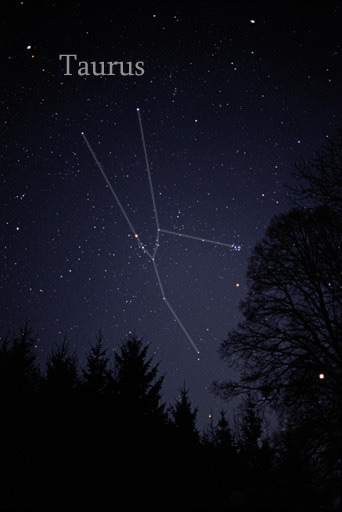
Falling behind Lee and Trisha as they walked up the hall, Rob turned on the visual display.
“I dumped a paying client for this image, you know,” Rachel said. Her tone was mock-serious, but she was smiling when her face appearing on the pad’s screen. Her dark hair was tied back, but escaped curls hung around her wide face and tumbled into her shining eyes. She was sitting in a dimly lit room with the light from her screen glinting off earrings half-hidden among her curls.
“Send me the bill”, Rob replied returning her smile. “I think I can even get you paid.”
“Good. We need the business. Maybe Xplore will want to give us a retainer? Anyway, I’m sending a link to your image. I gave it two good hours, but you’ll have to look close. You’ll see two short streaks in the image.”
Those streaks would be two of Lee’s Trojan asteroids, Rob knew. He also knew exactly what Rachel would say next.
“But the coordinates you gave me, they are dead center in this image. There’s nothing there. Nothing I can image in a couple hours anyway. Still going to pay the bill?”
“Rachel dear, I could kiss you. That empty image is worth every penny.” Rob hurried up the hall to tell the others.
You can start reading at Chapter 1 here
Glitch is available now for $2.98 at Amazon , Barnes & Noble , Apple, Inktera, Versent, Kobo, Diesel, and on Smashwords . Coming soon to Flipkart, too!








The City of Ember – Science Fiction Book Review
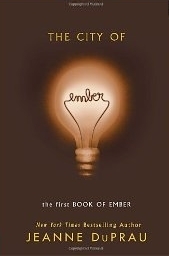 The City of Ember – By Jeanne DuPrau
The City of Ember – By Jeanne DuPrau
In this science fiction story, people live in a small city inside some sort of enclosure they do not understand. All their light is artificial and most of their food and other supplies come from storerooms left by the mysterious “Builders”. The lighting system is breaking down and supplies are running out. Authorities deny the problems, so two teenagers try to solve the mystery.
This book would be suitable for youngsters as well as adults. I enjoyed it and read it quickly. DuPrau establishes her world quite well. I liked the main characters and wanted to see them succeed. Even though the ending sets the reader up for another book, it was satisfying enough as a stand-alone book.








August 28, 2013
Today’s a Good Day – a Poem
Today’s a Good Day
By Kate Rauner
Today’s a good day
Since I learned something new,
A piece of the truth that I never knew.
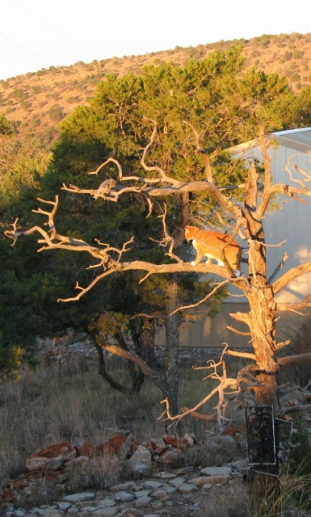
Learn to Climb
Kate Rauner
Learning is something I never regret,
Though what I find out may be hard to accept.
With pain and delight, knowledge conveys
A map of the twists and turns through the maze.
Sometimes what I learn I can use for myself.
Some facts in my mind are like dolls on a shelf.
First there is science for knowing the world,
From tightening a bolt to the cosmos unfurled.
Beauty’s important, and so there is art
To comfort my soul or just for a lark.
I study ethics: I want to be good,
To belong to mankind and my own neighborhood.
There’s no guarantee on the learning I get,
It’s wrong on occasion and sometimes correct.
I will keep questing to learn what is true,
But this is a good day
Cause I learned something new.








August 26, 2013
Tips on Writing
I love lists, and I recently found a web site that has quite a few. When I visited, a lot of the postings were related to writing: Nine books to help you read more and write better, five factors to make your life more creative, ten tips on writing (for business), ten rules of writing (fiction). It’s not all lists: Carl Sagan on Science and Spirituality. You may find something interesting here: http://www.brainpickings.org









